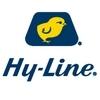Explore all the information on
Minerals in poultry nutrition
Minerals in poultry nutrition are typically classified as macro- or micro-minerals, depending on the levels needed in the diet. The macro-minerals include calcium, phosphorus, chlorine, magnesium, potassium, and sodium. Requirements for the macro-minerals are typically expressed as a percentage of the diet, while the requirements for the micro-minerals are stated as parts per million. Although the quantities required for micro-minerals are lower than for macro-minerals, they play an essential role in the body's metabolism. The micro-minerals include copper, iodine, iron, manganese, selenium, and zinc.
From Ghislaine Roch (Canada) presentation at Lallemand’s International Selenium yeast seminar (Grenaa, Denmark, 2007) Ghislaine Roch, independent feed nutritionist in Canada, has been working on antioxidants in animal production for over ten years. In Grenaa’s seminar, she stressed the importance of antioxidants in poultry management, explaining how modern animal production practices, associated with stress factors and intense metabolism, cause an increase in free...
Comments : 1
Recommendations: 0
To prove it, Adisseo has already invested more than 1 million euros in more than 20 trials across species since 2008 to figure out the synergistic value of Rovabio ® Max, a combination of Rovabio ® Excel, Adisseo's carbohydrase and phytase.
Knowing Rovabio ® Excel and phytase effects separately is not sufficient; as they may have contrary effects, for example on feed intake. Both...
Comments : 0
Recommendations: 0
WATER Water is probably the most important nutrient for poultry because a lack of adequate supply will adversely affect the bird's performance more quickly than a shortage of any other nutrient. This is why it is so important to keep an adequate supply of clean, fresh, cool water before the birds at all times. An automatic waterer, placed in the coolest area of the house or pen is probably best for most small-flock operations. If manually...
Comments : 3
Recommendations: 0
Dear Users,
This is an interesting forum from our Spanish community, generated by Gabriella Olivieri from Venezuela:
Hi, I want to ask a question about the supply of minerals in broilers:
I provided 200 grams of mineral (FOSVIT 20 of the CIA. Turtle Brazil) for every 40 kilos of concentrate, at 2 days after arriving the chicks, it has improved the yield in weight, but there is mortality at 16 days by infarction, and at 35 days this mortality is increased to 13.
I thank you any...
Comments : 0
Recommendations: 0


Bacillus amyloliquefaciens CECT 5940 (Ecobiol®) go beyond performance in broilers under enteric pathogen challenge compared to antibiotic growth promoter and other commercially available probiotics
Suggested link
what is the definition of organic trace mineral?currenlty, what is the kind of trace mineral that affects to reproduction such fertility? ...
Comments : 0
Recommendations: 0
How does early growth rate alter the response to the crude protein level in roaster diets? How is the mortality of birds kept to roaster weight affected by early body weight gain? A study was conducted by Hank Classen and Carlyle Bennett at the University of Saskatchewan to answer these questions.
A total of 1440 broiler cockerels, 720 each of two different broiler strains, were placed at one day of age in 48 pens, 30 birds per pen....
Comments : 3
Recommendations: 0
Achieving maximum health and performance of poultry requires nutritionally balanced diets. One of the common issues with regard to back yard flocks relates to poor or inadequate feeding programs that can lead to vitamin and mineral deficiencies for the birds. Vitamins and minerals are very important components of a chickens diet and unless a formulated ration is feed, it is likely that deficiencies will occur. Poultry require all known vitamins except C. Some vitamins are soluble in...
Comments : 20
Recommendations: 1
As has been obvious to everyone, the price of feed phosphates has undergone an almost incredible increase. A number of reasons can be cited for this, including: increased fertilizer needs to support the levels of corn production stimulated by ethanol policy, a worldwide shortage of sulfuric acid needed for some phosphate manufacture, and the extraordinary energy needs for producing of defluorinated phosphates. Whatever the reason, the tripling (possibly quadrupling) of price has demanded the...
Comments : 2
Recommendations: 0
TODAY'S PULLET Advances in genetic selection make today's pullets quite different from those of only a few years ago. Pullet body weight is less. Age at housing and at 5 percent production are earlier. Total egg numbers are increasing, egg mass is greater, and feed conversion has improved. Poultry producers who raise their own replacement pullets have better control of their pullet's growth, condition and development. When producers...
Comments : 0
Recommendations: 0
The purpose of this fact sheet is to demonstrate how to sample laying hen rations and interpret the calcium levels found in the feed. The results of a study of feed from 24 Saskatchewan leghorn flocks are used to help illustrate the reliability of calcium testing. How to Sample Feed Because the amount of calcium can vary from one sample of feed to the next, it is important to take a good feed...
Comments : 2
Recommendations: 0
The purpose of this fact sheet is to demonstrate how to sample laying hen rations and interpret the calcium levels found in the feed. The results of a study of feed from 24 Saskatchewan leghorn flocks are used to help illustrate the reliability of calcium testing. How to Sample Feed Because the amount of calcium can vary from one sample of feed to the next, it is important to take a good feed sample: 1. ...
Comments : 1
Recommendations: 0
This fact sheet has been developed to support the implementation of the Natural Resources Conservation Service Feed Management 592 Practice Standard. The Feed Management 592 Practice Standard was adopted by NRCS in 2003 as another tool to assist with addressing resource concerns on livestock and poultry operations. Feed management can assist with reducing the import of nutrients to the farm and reduce the excretion of nutrients in manure. Phosphorus (P) is one of the essential minerals...
Comments : 1
Recommendations: 0
Poultry feeds are referred to as "complete" feeds because they contain all the protein, energy, vitamins, minerals, and other nutrients necessary for proper growth, egg production, and health of the birds. Feeding any other ingredients, mixed with the feed or fed separately, upsets the balance of nutrients in the "complete" feed. Feeding additional grain or supplement with the complete poultry feed is not recommended. Young chickens or broilers kept for meat production are fed...
Comments : 0
Recommendations: 0
Maintaining high fertility is critical for successful hatching egg production. Changes in diets can be used to improve fertility. Selenium is an essential nutrient and is important for reducing cell membrane damage. Selenium is found in different forms. Organic forms are found in plant and animal materials and are generally easier for animals to absorb. Research has shown that selenium is essential for male fertility (successful sperm). This trial looked at the effect of selenium...
Comments : 1
Recommendations: 0


Effects of DON and antidote on pro-inflammatory mRNA expression of broiler
Suggested link
A global shortage of feed phosphate has forced producers to review dietary levels. But care is needed when making changes, as Aviagen's Anthony Waller explains. Suppliers of feed phosphates announced around Christmas 2007 that supplies of phosphates would be insufficient to meet orders from the animal feed industry. In some cases only 30% of ordered tonnage was supplied. This had a serious impact upon poultry feed manufacturers and producers, in terms of ability to supply stock...
Comments : 1
Recommendations: 0
An experiment was conducted using ninety-six, day old broiler chicks to study the effect of inclusion of heat-treated rock phosphate (HTRP) instead of dicalcium phosphate (DCP) on performance of broilers. Total four diets were tested. Control diet (T1) was prepared using maize 54.08 %, soybean meal 25.73 %, deoiled rice polish 9.19 %, fishmeal 8.00 %, mineral mixture (MM) 3.0 % and vitamin supplements. All the diets were isonitrogenous and isocaloric (22% CP and 2800 kcal ME/kg). ...
Comments : 2
Recommendations: 0
SELENIUM: AN ESSENTIAL TRACE ELEMENT Incorporation of essential trace elements into the diets of all animals is required for maintenance of health, growth, and myriad biochemicalphysiological functions (Scott et al., 1982). Among these essential trace elements is selenium (Se). Selenium was discovered by Berzelius in Sweden in 1818, but a biological significance of this element was not recognized until it was identified as the toxic agent associated with ‘alkali disease’, now...
Comments : 1
Recommendations: 0
Zinc (Zn) has been known to be an essential nutrient for normal growth and feathering of chicks for half a century (O’Dell and Savage, 1957). The zinc requirement of chicks was first defined to be 30 ppm by Roberson and Schaible (1958). Subsequent research provided evidence for the 1994 Nutrient Requirements for Poultry (NRC, 1994) to set the requirements of broilers at 40 ppm. However, most of these research data are more than 10 years old and do not represent the needs of modern...
Comments : 0
Recommendations: 0
It has been suggested that in the not too distant future broilers will be produced in cages (Smith, 1972). From the mid-1960s to the early 1980s, many attempts were made to design cage facilities for the rearing of broiler chickens from hatch to market age. Unfortunately, none of these early cage systems allowed economical broiler production because there were high incidences of downgrades (Lloyd, 1969), breast blisters (Andrews and Goodwin, 1973), soft, distorted and broken bones (Merkley,...
Comments : 0
Recommendations: 0
The current physiological status of broiler breeder hens and how to meet their nutritional requirements has recently been examined (Renema and Robinson, 2004). The amazing genetic progress of modern breeders was greatly emphasized. Modern broiler stocks can grow at 4.6 times the rate of a 1957 random-bred strain (Havenstein et al., 2003a). The 6-fold improvement in carcass yield of 2001 stock fed a 2001-type diet compared to 1957 birds fed a 1957 diet is 85-90% due to genetics and only 10-15%...
Comments : 0
Recommendations: 0




.jpg&w=3840&q=75)








